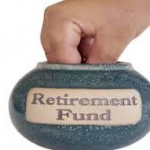Home > Retirement > Hedging – A Protection From Losses?
Hedging – A Protection From Losses?
 This article serves as an introduction, and to establish context for remarks over my next two articles.
This article serves as an introduction, and to establish context for remarks over my next two articles.
James “Jamie” Dimon is the current chairman, president and chief executive officer of JPMorgan Chase. A vast amount of ink has been spent concerning JPMorgan Chase’s billions of dollars of losses – losses that were a result of an attempt to hedge credit risk. Mr. Dimon has described these ill-fated hedges as, “poorly designed,” “sloppy,” and “a terrible, egregious mistake.” Clearly there is a disconnect here: hedges are supposed to protect against losses, not create them.
Hedging sounds so sensible: to protect a portfolio against loss. A hedge can be constructed from many types of financial instruments; stocks, exchange-traded funds (ETFs), insurance, forward contracts, swaps, options, many types of over-the-counter derivative products, and futures contracts. The fact is, there are many ways one can be wrong and for the hedge to fail (as the trader at JPMorgan Chase discovered):
- Sell a stock short that you expect to decline in price, but it goes up. (Notice the investor now must get correct the direction of a future stock price correct twice – once for the security that one is expecting to advance in price, and once for the security that one is expecting to decline in price – the hedge.)
- The investor can err by hedging an incorrect amount.
- The hedge may ultimately work as anticipated, but not in the time required to afford protection.
- Inadequate liquidity making it impractical to alter one or both sides of the hedged trade.
The above are well understood risks of hedging. I will be building a case to illuminate a largely misjudged, and consequently undetected risk associated with hedging – a risk that has wide and far reaching implications – extending far beyond Wall Street. If I am only partially correct, failed hypothetical frameworks like the Efficient Market Hypothesis, Modern Portfolio Theory, etc. will precipitate a massive redistribution of wealth from ignorant hands to knowledgeable hands. Warren Buffett once said, and I paraphrase, “Investing is simple, but not easy.” It is my hope to bring into focus the less apparent implications of Mr. Buffett’s simple, vastly underappreciated observation.
A Zero Sum Endeavor
Investing within the public markets is largely a zero sum activity. In order for one party to be successful, another party must fail. The long term successful investor is the investor who makes the fewest errors, or whose errors are smallest in magnitude.
For a market to be efficient, the market must be largely error free. And markets are, in fact, largely efficient, but not totally efficient. One way to think about investing is to recognize that the process of investing is a quest to seek out the errors of others.
Whenever an investment position is assumed two parties are effectively wagering that each is correct and the counter party is mistaken. Of course, in most cases, both parties cannot be correct. One party will prevail and the other will be disappointed. Although there are situations where differences in such things as tax status and time frames can result in both parties experiencing a successful outcome. Here’s my point: The control of investment risk, which we define as a permanent impairment of capital – not volatility – has little to do with risk mitigation products/hedges. Risk control is a mindset, a way of approaching the world.
The Risk Control Mindset
I found the following interview with outstanding investor Robert Rodriguez at www.WellingonWallSt.com. If you “listen loudly,” you will hear an excellent example of a risk control mindset. (It is less important whether you agree with the investment thesis propounded by Mr. Rodriguez then the manner in which he reasoned through his investment strategy.)
Robert Rodriguez: I had a person from a well-respected firm in my LA office about a month ago. I asked him, “You are smart. What are you doing with your money?
He said, “4% dividend yield stocks.”
I said, “That looks attractive relative to ten-year bond yield at 2%.”
He said, “Yes, versus zero return on money markets.”
I said, “What do you think the odds are that in the next five years we will have an economic or financial dislocation – 20%?
He said “Yes.”
“30%?”
He said, “Yes.”
We went all the way up to “80%?” before he said, “I’m not so sure about [80%].
So I said, “OK, you’re saying that the odds we have an economic dislocation in the next five years is around 70%. Do you think the odds are that, in an economic dislocation, a stock price would drop 15 to 20%?”
He said, “Oh, yes.”
“30%?”
“Yes.”
“40%?”
“Sure.”
“Market down 20%?”
“Yes.”
I said, “Well, I’m sitting here on my own personal portfolio in short-term money markets and in our bond fund, because I know what is in there. I’m assuming that I earn zero on my money, so I think those are relatively conservative assumptions. Which means that in five years, I lose a bit over 15% of my purchasing power, if my purchases emulate CPI. So I know, for certain, I’m going to lose 15%.”
Interviewer: You’re some salesman.
Robert Rodriguez: Wait, there’s more. I then told him, “You know for certain that you’re going to earn 4% — well, maybe yes, maybe no, but I’ll give you, 4%. So, in five years you are going to earn 20%. You know that. You know what you are going to earn over five years. But what you don’t know is what the principal value of your investment is going to be. On the other hand, while I know that I’m going to lose purchasing power of 15%, I also know what my principal value is going to be.
Interviewer: Assuming the currency is worth anything.
Robert Rodriguez: We’re in equal currency. So, as I told him, “The difference between us is what risk we are willing to take. You are willing to take principal valuation risk and I am not. You said that we’re likely to have a major economic dislocation within the next five years. I don’t know if that is right or wrong, but if you’re right the odds are virtually 100% that various stocks will be down at least 20, 30, 40, and 50%. So if I patiently wait, I will be able to deploy capital into a better company with a higher expected return in a period where there’s lower risk to my principal. What it requires is one thing.”
He says, “What?”
“Patience. That’s what is not in the market-place, the patience to wait. We can’t have our money not earning anything. Investments today in general are not earning anything. Investments today in general are not made because they’re so attractive, but because you can’t earn money on cash. When you effectively have a zero cost of capital, everything qualifies as an ‘investment.’ So I ask him, “Have we ever had price controls in this country?”
“Yes, I remember Nixon in 1971. And Jimmy Carter had them.”
So I asked, “When price controls come off, what happens to the price of the asset that was under control?”
He said, “It goes up.”
Then I asked, “What do we have under price control today?”
He said, “The cost of money.”
Then I explained, “When eventually the Fed is forced to change course, then we’ll see what the true clearing price is, without all of this manipulation. And people may require higher compensation to hedge themselves against risk. It will be no different than what happened in Italy, Spain, and a host of other countries.”
Debt Crisis
“What global investors, fixated on historical cyclical trends as opposed to secular delevering dynamics fail to appreciate,” explained PIMCO’s Bill Gross, “Is that economies and their financial markets historically have taken several decades as opposed to several years to renormalize once the fatal grip of too much debt wreaks havoc on the assumed perpetuity of capitalism’s prosperity machine. Can a debt crisis be cured with more debt? Yes, if initial debt levels are reasonable and central banks are able to rejuvenate the delicate dance between debtor and creditor – each believing that they are getting a good deal in terms of risk, reward and the deployment of funds between now and some future maturity. But when debt as a percentage of GDP, or debt service as a percentage of household income, or the appropriateness of the term structure (short vs. long) on both borrower and lender balance sheets becomes imbalanced, then the well-oiled capitalistic engine may sputter and in some cases – as in Greece – freeze up. That’s when a debt crisis can’t be cured with more debt, be it in the form of QEs or LTROs, or implicit firewalls created or to be created by Eurobonds, ESMs, the IMF or any other agency that presumably is money good. The fact is that the current burden of global debt is only being lightly alleviated via zero-bound interest rates. None of it, other than Greek PSI or minor amounts of private U.S. mortgage debt has been extinguished over the post-Lehman era; it has only been transferred from one pocket to another. Banks, insurance companies and mutual funds have passed the proverbial Old Maid from their hands to that of the ECB, or to Spanish and Italian banks, and ultimately on to the German core. Does it matter that Greece decides to stay with the Euro or that the Southern peripherals move towards austerity, or that the U.S. in November decides to go Red or Blue? Not much. Solutions for real growth matter only at the margin. An authentic debt crisis – which the world is now experiencing – can only be ultimately cured in two ways: 1) default on it, or 2) print more money in order to inflate it away. Both 1 and 2 are poison for bond and stock holders…
“This observer must obviously admit – as do rating services – that some countries are better than others. Those with initial debt conditions that don’t exceed historical norms, those that can print and issue debt in their own currencies, those that have reasonable trade balances, those that emphasize the sanctity of property rights, those that dominate the global military stage, those with innovation and education, those…. I could go on. Many of the above conditions point investors to the ultimate “safe haven,” the cleanest of the dirty shirts, the champion of champions, rose of all roses – the United States. I will not dispute it, market movements have confirmed it and my own experience in 2011 is a testament to it. Don’t underweight Uncle Sam in a debt crisis. Money seeking a safe haven will find it in America’s deep and liquid (almost Aaa rated) bond and equity markets.”
Mr. Gross concludes his remarks with the following assessment, “…at the moment the U.S. is considered to be [in the best fiscal shape.] But things change. A blossoming rose wilts over time. A good name can be slandered, a great opportunity to change fiscal direction squandered within a few short years. This debt crisis should be considered global as opposed to regional, and investors should recognize [this]…”
While we are clearly living in uncertain times and in uncharted waters, the fact remains that throughout human adversity the world has survived and ultimately prospered. What lies ahead is the purging process of former excesses, abuses, and foolishness. It will only be after these excesses have cleared that the economy can resume its footing. Unfortunately, the duration, magnitude, and related distress of this cleansing process is unknowable.
I can vividly remember the stock market crash of 1987 – which occurred over 25 years ago! On Monday, 19 October 1987, when the opening bell sounded the Dow Jones Industrial Average (DJIA) stood at 2,247. When the closing bell sounded the DJIA weighed in at 1,739. This was a 508 point decline (almost 23%) in a single day. At the same time, international markets swooned by as much or more. Hong Kong fell 45%, Australia fell 42%, and the UK fell 26%.
While the stock market crash of 1987 was cause for great consternation and (frequently foolish) pontificating, the Dow has since that event risen from 1739 to about 14,000 as of this writing, not accounting for the reinvestment of dividends. For all the sound and fury, long term investors did well. I could paint the same picture for any other period of pessimism. Assuming very conservative rates of compounding, it is not a stretch to predict that within 10 to 12 years, one could anticipate the Dow at above 20,000. If history is a guide, our Graham grounded investment approach should do even better. When you think of the Dow at 20,000 within 10 to 12 years, which is almost certain to occur, the current uncertainty and volatility seems more bearable.
The single most important takeaway is the following. In all former economic dislocations and disruptions the profile of those who survived, and ultimately prospered, has been identical: high quality assets, little or no debt, and abundant liquidity to survive without invading a portfolio that may have experienced a temporary markdown in price, but not value. If the purging process never happens, our equity commitments should perform well – if not very well. If the disruption manifests, and we have the liquidity to wait it out, after the dust settles our equity commitments should perform well – if not very well. This is what I call, “Heads we win; tails we also win, it just takes a little longer.”
To learn more about Marshall Serwitz view his Paladin Registry profile.
Other posts from Marshall Serwitz
Is the Market Headed Higher or Lower? Are Investors Impostors?
Is a tomato a fruit, or is a tomato a vegetable? Botanically, tomatoes are a fruit. But in...
Retirement Portfolios – Shifting from Accumulation to Distribution
Creating sustainable retirement portfolios is as much art as science. The tendency to view our annual capital projections...
Hedge Funds – The Good, The Bad and The Train Wreck Coming
The concept of “hedging”, or protecting investors from volatile and uncertain markets, is not new. In fact, the...



